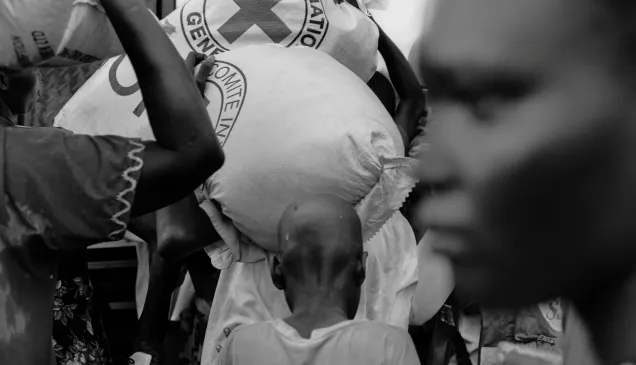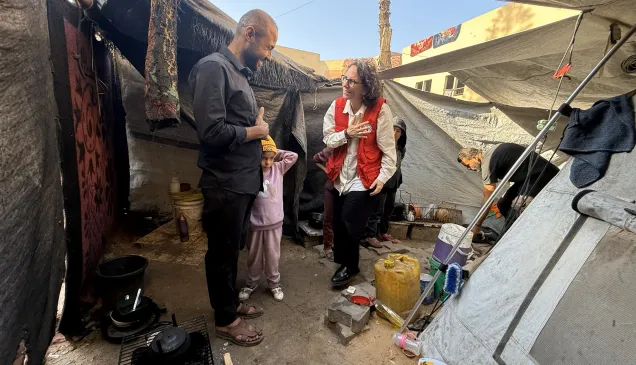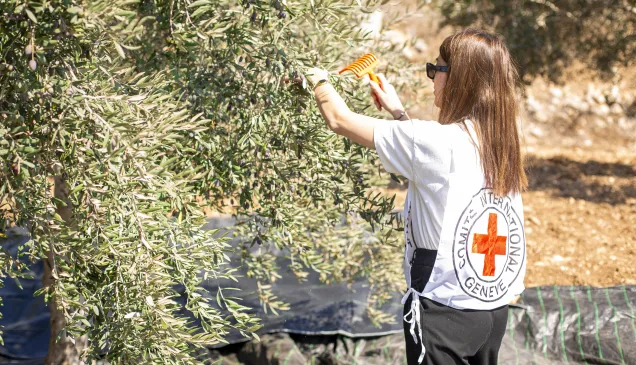Students of the Tunis School in the Gaza Strip listen attentively to two puppets to learn the risk of Explosive Remnants of War (ERW) as part of an ICRC Mine Risk Education (MRE) programme.
Fun lessons could save lives in Gaza
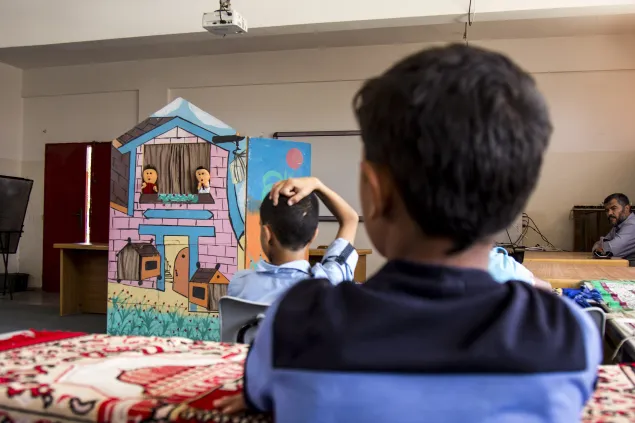
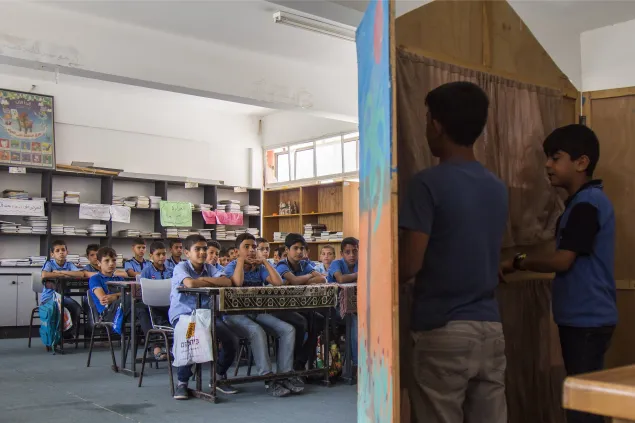
Mohammed Bassam, 11, plays a role in the puppet show. “I enjoy being part of the puppet play because I make my classmates aware of the risks of ERW. I tell them not to touch strange objects because these might be dangerous and could hurt us, kill us or have a limb amputated,” said Mohammed before going on stage.
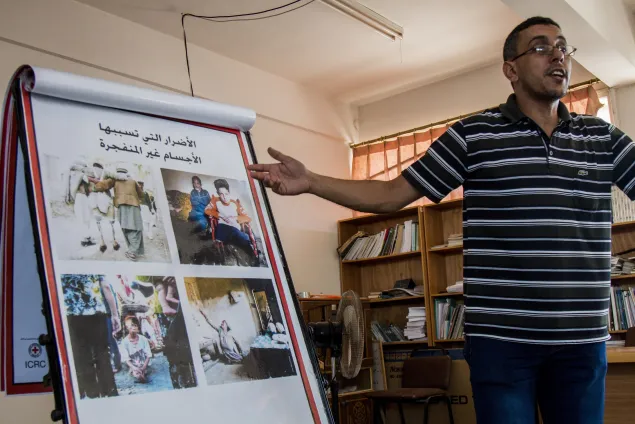
Esam Abu Abdeh, 32, who has been teaching at Tunis School for eight years, explains to his students what to do in case they find an ERW – a lesson that could be a matter of life and death. Esam is one of 87 teachers from 43 schools in Gaza who are part of the MRE programme.
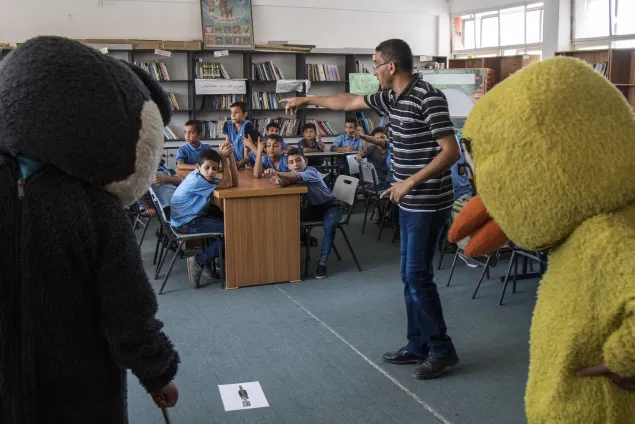
Two teddy bears help Esam explain to the students what to do in case they find ERWs.
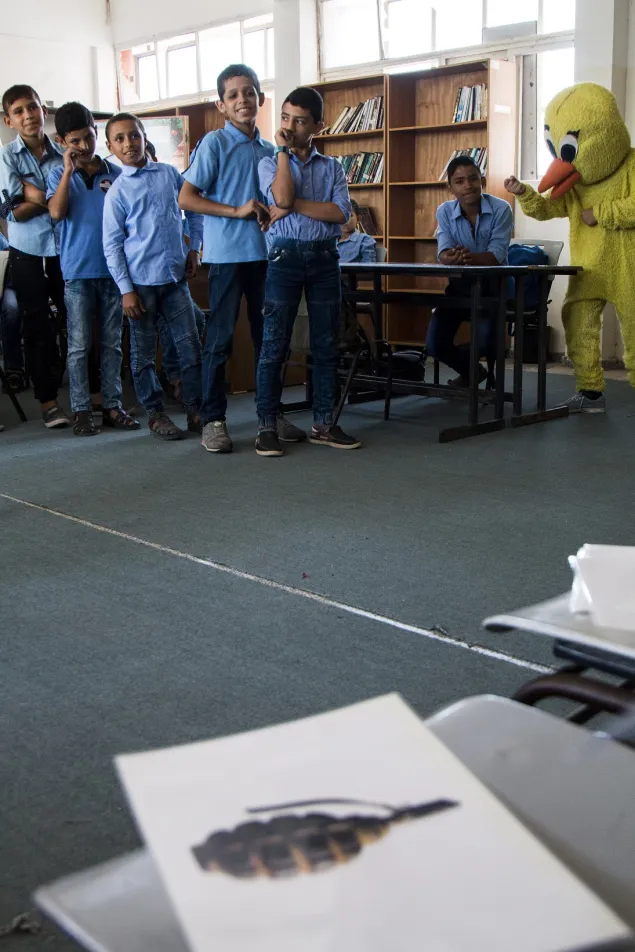
Although it has been nearly three years since the last war in the Gaza Strip, there are still so many ERWs. This consequence of war continues to affect the population, with many children among those whose lives have been permanently altered by unexploded remnants.
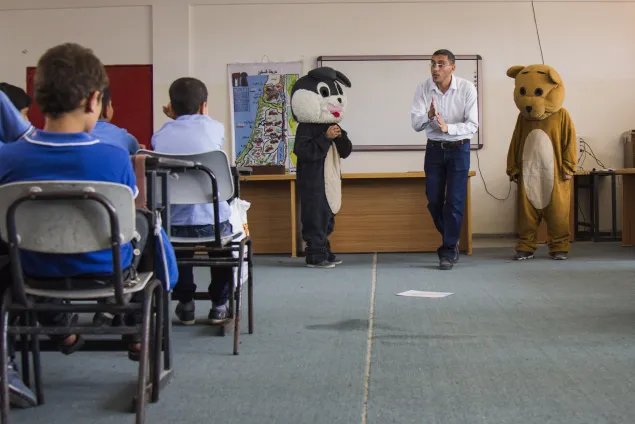
“Some of the students suffer from insomnia and others are afraid of lightning and the sound of thunder because they are reminded of the sounds of the bombing and shelling they experienced during the war,” said Esam.
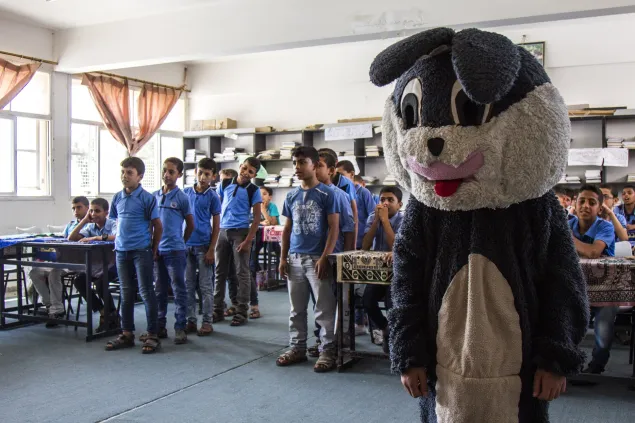
A teddy bear, played by Youssef Fattouh, a 12-year-old student from Tunis School. “I am happy to play the role of a teddy bear because my friends learn from me not to approach dangerous objects and always inform an adult about it,” said Youssef before removing the mask.
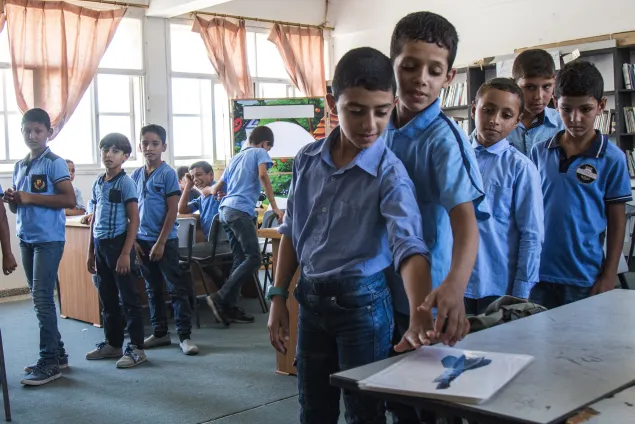
Students play a game to distinguish dangerous objects from familiar ones.
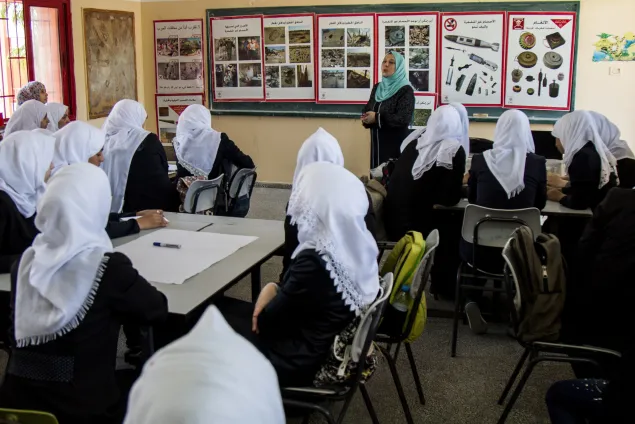
A few kilometres away from the border area, lies Bissan school for girls. Here, the students, mostly teenagers, also learn about the dangers of unexploded munitions through dissemination, group exercises and songs.
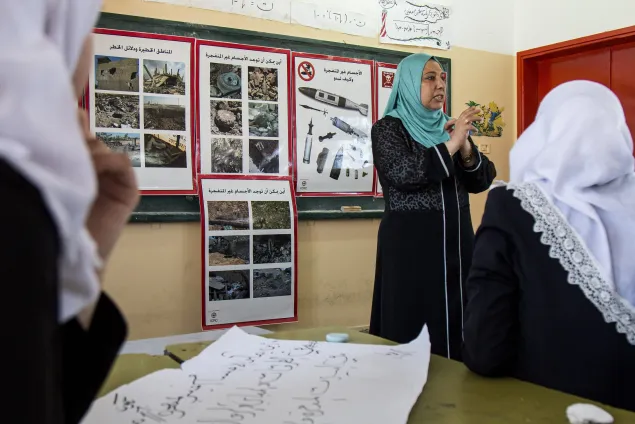
“These students, who live near border areas, are more exposed to shelling and military operations.” said Eman Abdel Men'em, a teacher, who is part of ICRC's MRE programme.
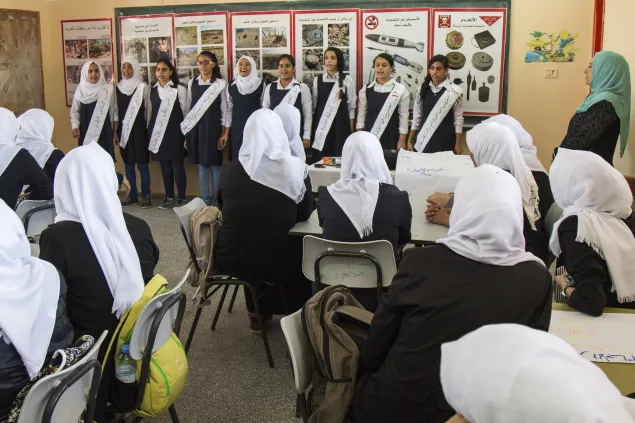
Young students sing a song about ERWs. ICRC's programme makes use of entertaining activities to grab students’ attention and teach them what to do when they come across a dangerous object.
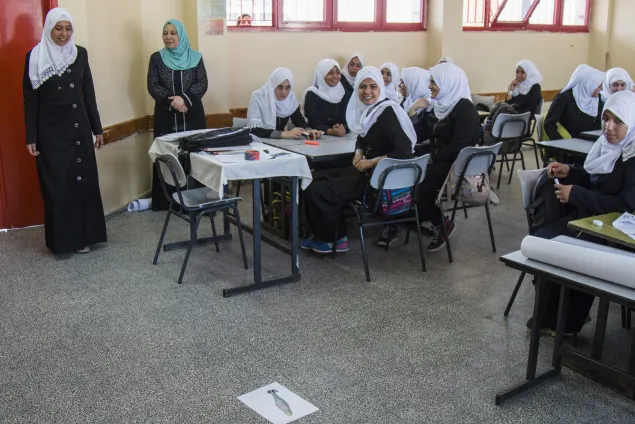
The majority of Gaza's students have already been through several wars, and bear the psychological scars associated with surviving war.
As a result of numerous military operations in the last two centuries, large tracts of Israel and the Occupied Territories are contaminated with Explosive Remnants of War (ERW).
According to the United Nations Mine Action Service (UNMAS), since the 2014 conflict with Israel, approximately 6,000 items of unexploded ordnance (UXO) could still be in the ground in the Gaza Strip, 16 people have been killed and 97 injured, including 48 children, due to contact with ERWs.
A puppet show was staged as part of the Mine Risk Education (MRE) programme implemented by the International Committee of the Red Cross (ICRC). The programme aims to raise awareness and promote safe behaviour among students and teachers, particularly regarding ERW.
Although it has been nearly three years since the last war in the Gaza Strip, there are still so many ERWs in the ground. This consequence of war continues to affect its population, with many children among those whose lives have been permanently altered by unexploded remnants.
The clearance of the Gaza Strip will take many years, and realistically a residual level of contamination will always persist. However, through activities like the MRE programme, children of Gaza can keep playing while also learning lessons that could save their lives.

